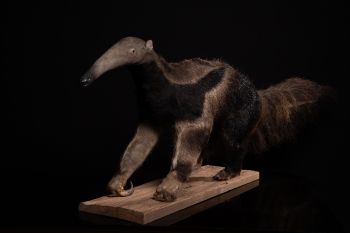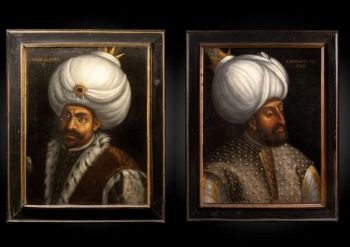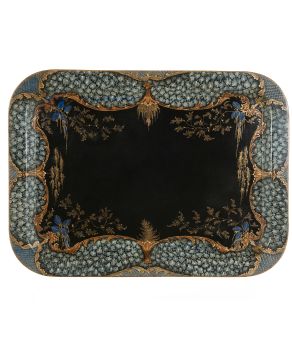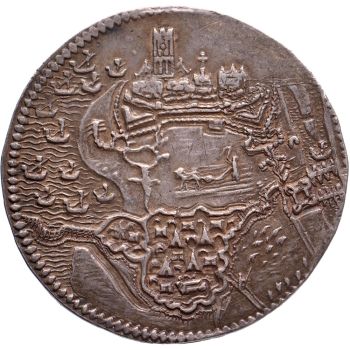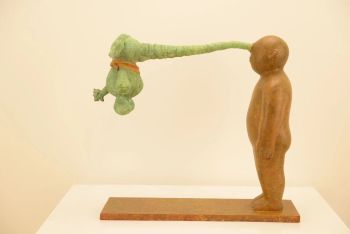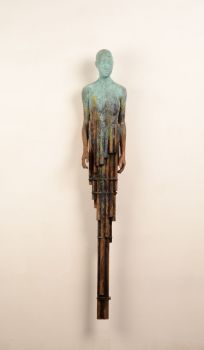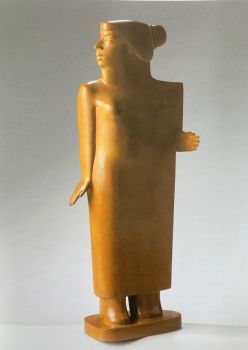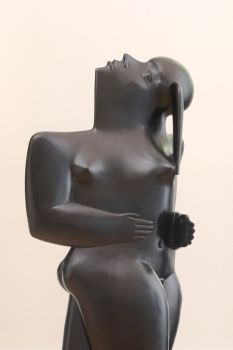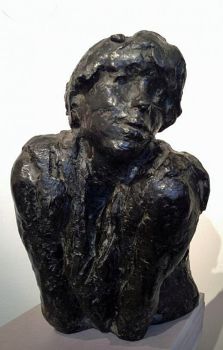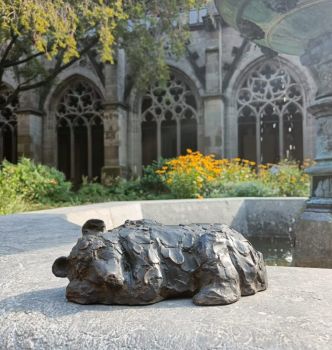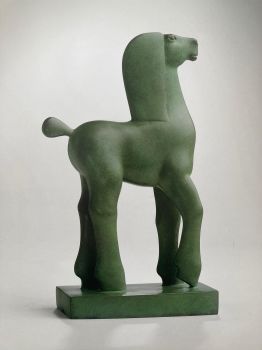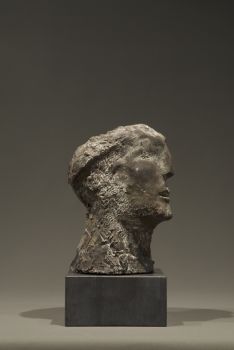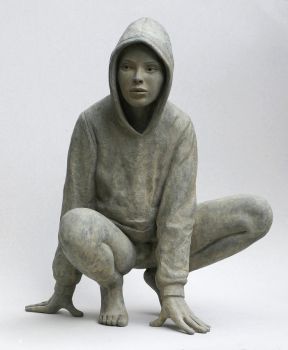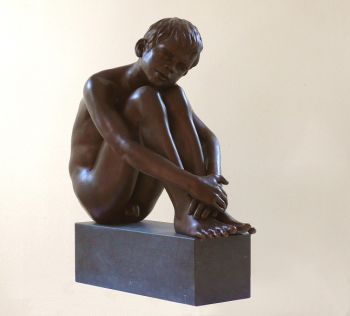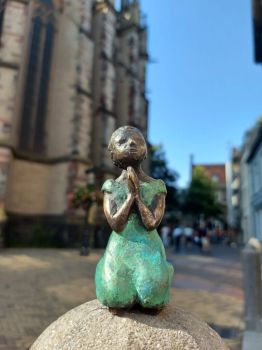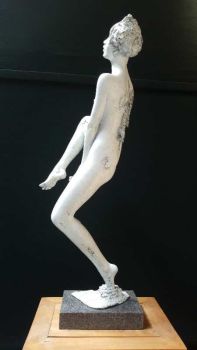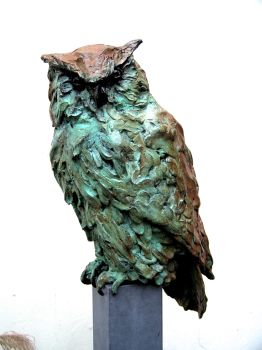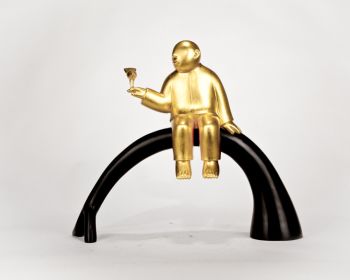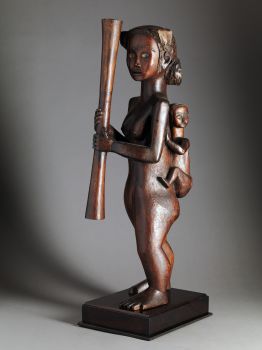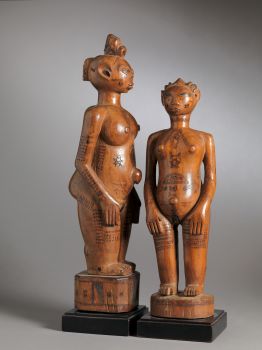Bronze sitting female statue, Kulango People, Ivory Coast 1920 - 1960
Artista Desconocido
BronceMetal
13 ⨯ 3 ⨯ 2 cm
ConditionVery good
€ 9.800
Spectandum Gallery
- Sobre la obra de arteThis bronze statuette of striking modernity,in a minimalist and refined style is part of an eminently small corpus. The fluidity of the forms and the remarkable purity of the figurine, characterizes the play of tension and balance of Kulango art. To the fluidity of forms is added the remarkable artistic creation of the representation. In addition to its essential dynamics, the body unfolds in a game of tension and perfectly controlled balance, the triangular face with the ophidian aspect stretched forward.See Ricqlès (Paris, 1 July 2001, no. 606) for a very comparable Kulango bronze in the collection of Hubert Goldet.The Kulango originated in the northeastern part of Cote d'Ivoire near Bouna. They eventually occupied Bondoukou (south of Bouna) as well. Some have since moved across the border from Bondoukou into the central western regions of Ghana. The basic method of lost-wax casting has been widely practiced on the African continent for centuries. While it is difficult to establish how the method was developed or introduced to the region, it is clear that West African sculptors were casting brass with this method for several hundred years prior to the arrival of the first Portuguese explorers along the coast in 1484. The technique requires a great deal of skill, involving extensive knowledge of both pottery and metalworking, and a careful attention to changing temperatures to prevent unwanted cracking or other damage to either the clay mold or to the metal sculpture during the casting process. Some of the earliest and most accomplished bronze works found in Africa date to the tenth century and are from a site called Igbo-Ukwu.
- Sobre el artista
Puede suceder que un artista o creador sea desconocido.
Algunas obras no deben determinarse por quién está hecho o por (un grupo de) artesanos. Algunos ejemplos son estatuas de la Antigüedad, muebles, espejos o firmas que no son claras o legibles, pero también algunas obras no están firmadas en absoluto.
También puedes encontrar la siguiente descripción:
•"Atribuido a …." En su opinión, probablemente una obra del artista, al menos en parte.
•“Estudio de….” o “Taller de” En su opinión, una obra ejecutada en el estudio o taller del artista, posiblemente bajo su supervisión
•“Círculo de…” En su opinión, una obra del período del artista que muestra su influencia, estrechamente asociado con el artista pero no necesariamente su alumno.
•"Estilo de …." o “Seguidor de…”. En su opinión, una obra ejecutada al estilo del artista pero no necesariamente por un alumno; puede ser contemporáneo o casi contemporáneo
•"Manera de …." En su opinión una obra al estilo del artista pero de fecha posterior
•"Después …." En su opinión, una copia (de cualquier fecha) de una obra del artista
•“Firmado…”, “Fechado…” o “Inscrito” En su opinión, la obra ha sido firmada/fechada/inscrita por el artista. La adición de un signo de interrogación indica un elemento de duda.
•“Con firma…”, “Con fecha…”, “Con inscripción…” o “Lleva firma/fecha/inscripción” en su opinión la firma/fecha/inscripción ha sido añadida por alguien que no es el artista
¿Está interesado en comprar esta obra de arte?
Artwork details
Related artworks
Artista Desconocido
A Dutch colonial Indonesian betel box with gold mounts1750 - 1800
Precio a consultarZebregs & Röell - Fine Art - Antiques
1 - 4 / 12Artista Desconocido
Two Centaurs, France or Italylate 18th
Precio a consultarRobert Schreuder Antiquair
Artista Desconocido
A white jade ‘Lotus Seedpod and Bug’ carving, Qing dynasty, 18th century18th century
Precio a consultarMenken Works of Art
Artista Desconocido
Chinese carnelian agate vase or brush washer, 18th/19th century, Qing dynasty1720 - 1820
Precio a consultarMenken Works of Art
Artista Desconocido
Chinese gilt bronze censer, Xuande mark, 18th century, Qing dynasty18th century
Precio a consultarMenken Works of Art
1 - 4 / 24- 1 - 4 / 24
Artista Desconocido
MATERNITY FIGURE, FANG-MABEA, CAMEROON.PROVENANCE R.CAILLOIS-P.RATTON.1920 - 1930
Precio a consultarSpectandum Gallery
Artista Desconocido
EIGHT NEO-GOTHIC STAINED GLASS WINDOWS WITH SUSPENSION EYELET, 19th C, BELGIUM.1850 - 1900
Precio a consultarSpectandum Gallery
Artista Desconocido
Couple Wooden Ancestors Sculptures with Scarifications, Zela People, DRC. 1920 - 1930
Precio a consultarSpectandum Gallery
1 - 4 / 12











